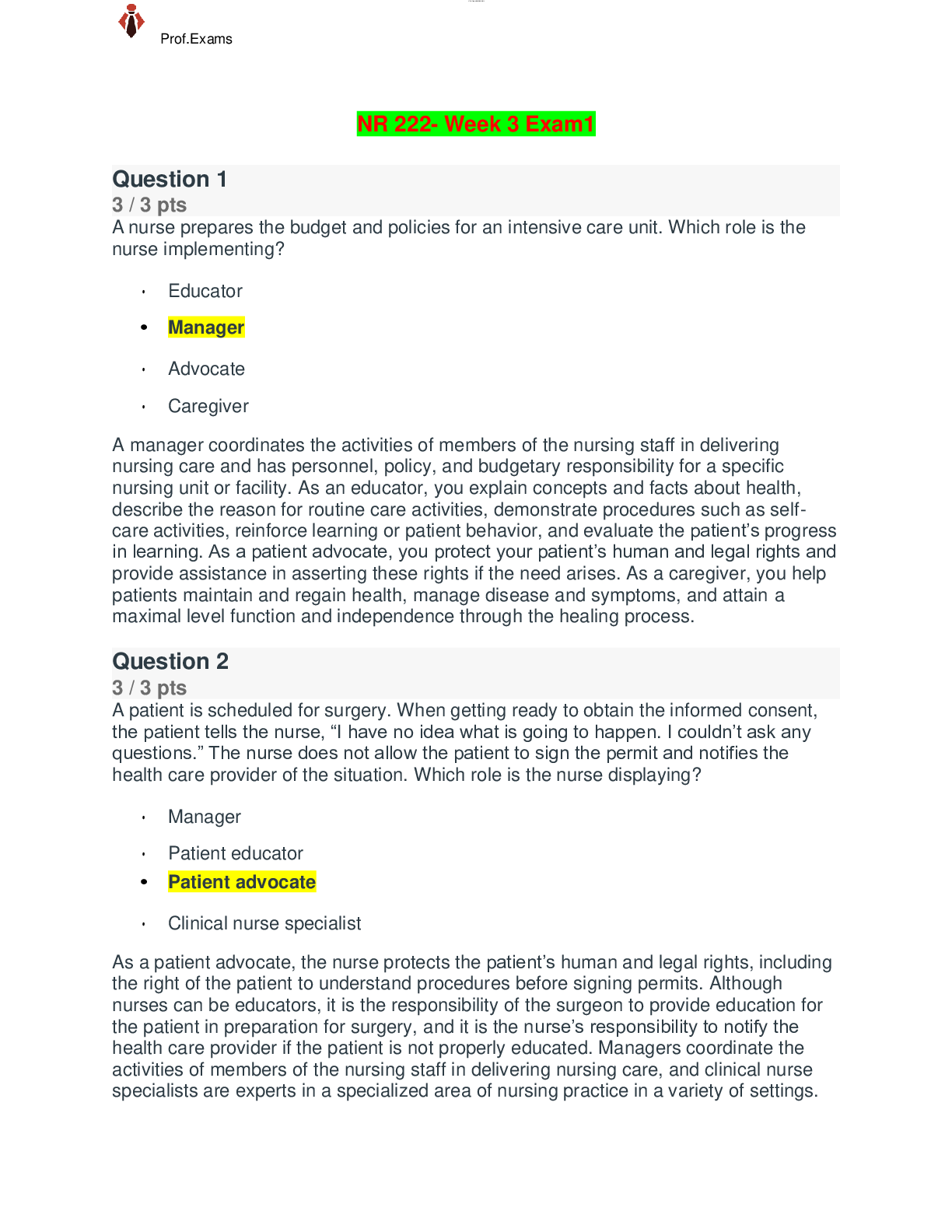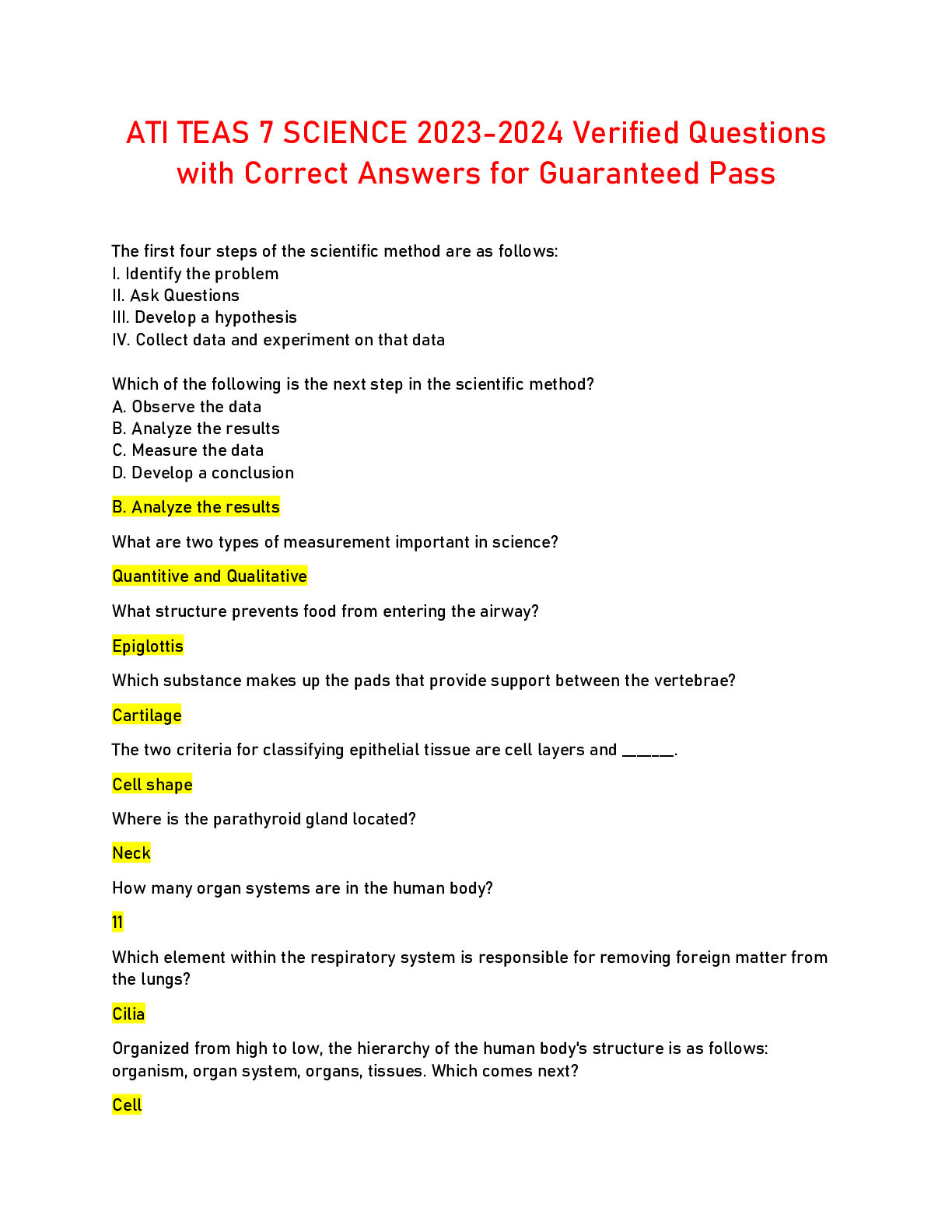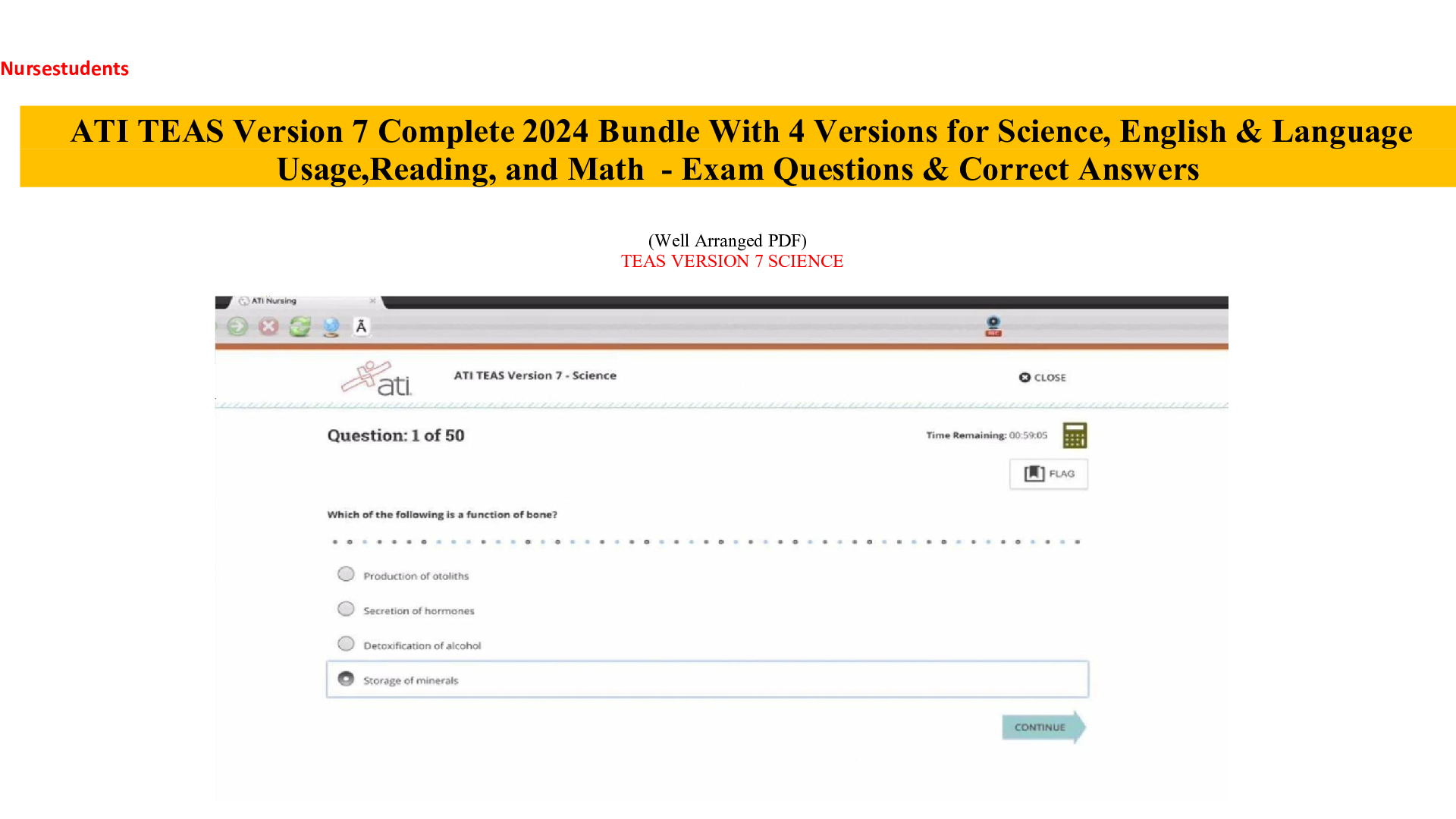berman10e_ testknowledge_answers_ CORRECT ANSWERS FOR BERMAN QUESTIONS
Document Content and Description Below
Appendix A Answers to Test Your Knowledge Chapter 1: Historical and Contemporary Nursing Practice 1. Answer: 1, 4, and 5. Rationale: Option 2, Florence Nightingale, contributed to the nursing c are of... soldiers in the Crimean War. Option 3, Fabiola, used her wealth to provide houses of caring and healing during the Roman Empire. Cognitive Level: Knowledge. Client Need: N/A. Nursing Process: N/A. Learning Outcome: 1-1. 2. Answer: 2, 3, and 5. Rationale: State boards of nursing set minimum educational requirements for licensure. Professional organizations establish educational criteria for program accreditation. The National Council of State Boards of Nursing conducts practice studies and creates the NCLEX-RN®. Neither physicians (option 1) nor hospital administrators (option 4) are involved in setting nursing curricula. Cognitive Level: Remembering. Client Need: N/A. Nursing Process: N/A. Learning Outcome: 1-3. 3. Answer: 2. Rationale: Continuing education refers to formalized experiences designed to enhance the knowledge or skill of practi- tioners. The other answers are examples of in-service education, which is designed to upgrade the knowledge or skills of current employees with regard to the specific setting, and is usually less formal in presen- tation. Cognitive Level: Analyzing. Client Need: Safe, Effective Care Environment. Nursing Process: N/A. Learning Outcome: 1-4. 4. Answer: 3. Rationale: Health promotion focuses on maintaining nor- mal status without consideration of diseases. Option 1 is an example of illness prevention. Option 2 is aesthetic (i.e., not needed for health promotion or disease prevention). Option 4 focuses on disease detec- tion. Cognitive Level: Remembering. Client Need: N/A. Nursing Process: N/A. Learning Outcome: 1-6. 5. Answer: 3. Rationale: All are noted nurses. Linda Richards was Amer- ica’s first trained nurse, and Mary Mahoney was America’s first Black trained nurse. Cognitive Level: Remembering. Client Need: N/A. Nursing Process: N/A. Learning Outcome: 1-2. 6. Answer: 2. Rationale: Option 1, the advanced beginner, demonstrates marginally acceptable performance. Option 3, the proficient practi- tioner, has 3 to 5 years of experience and has developed a holistic understanding of the client. Option 4, the expert practitioner, dem- onstrates highly skilled intuitive and analytic ability in new situations. Cognitive Level: Remembering. Client Need: N/A. Nursing Process: N/A. Learning Outcome: 1-11. 7. Answer: 4. Rationale: The National Student Nurses Association developed the Code of Academic and Clinical Conduct for nursing students in 2001. Option 1, ANA, developed Standards of Nursing Practices. Option 2, NLN, focuses on nursing education. [Show More]
Last updated: 2 years ago
Preview 1 out of 33 pages
.png)
Buy this document to get the full access instantly
Instant Download Access after purchase
Buy NowInstant download
We Accept:

Reviews( 0 )
$11.00
Can't find what you want? Try our AI powered Search
Document information
Connected school, study & course
About the document
Uploaded On
Sep 24, 2022
Number of pages
33
Written in
Additional information
This document has been written for:
Uploaded
Sep 24, 2022
Downloads
0
Views
64

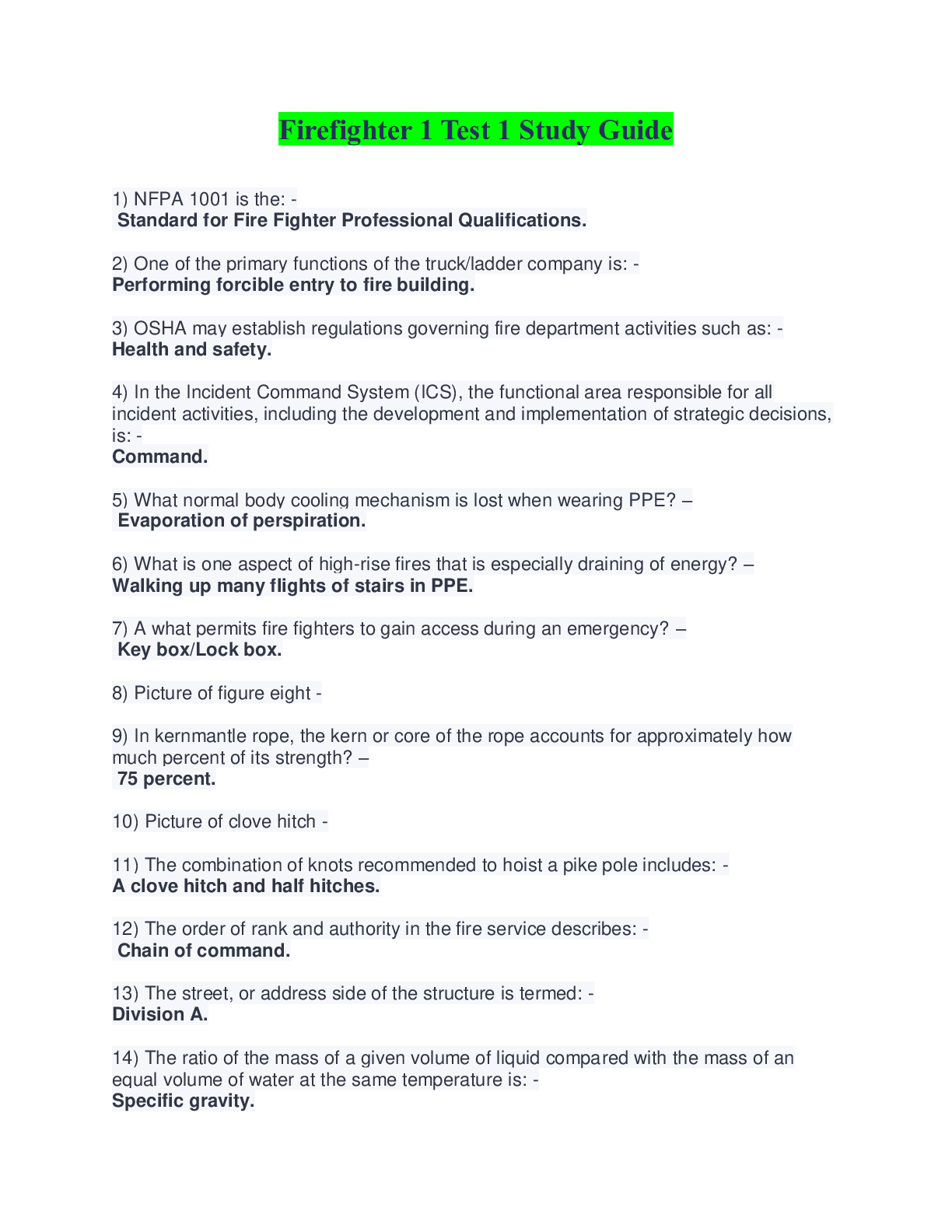



.png)
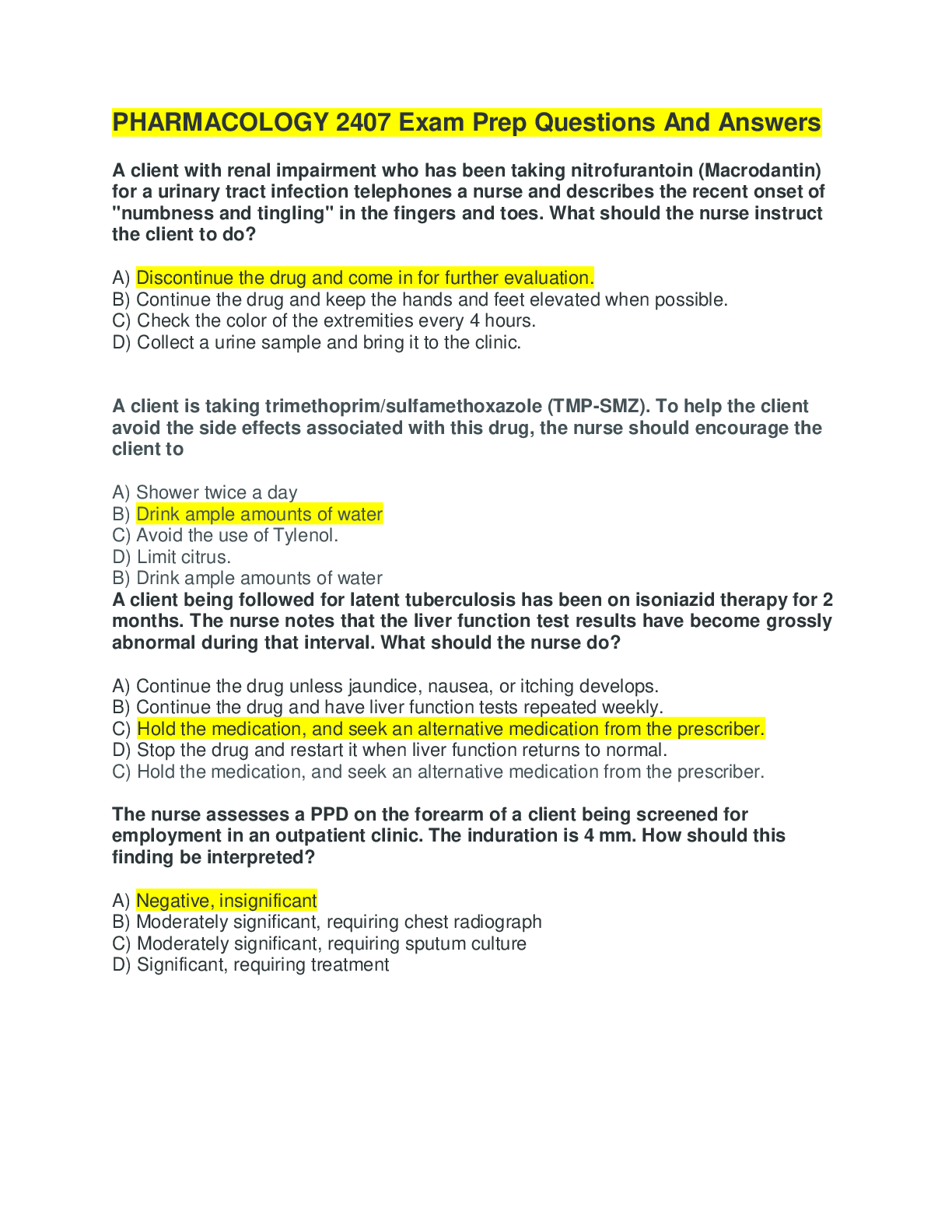

.png)




.png)
.png)
NEW UPDATE ALWAYS TESTED EXAM QUESTIONS WITH CORRECT ANSWERS FOR FNAN 522 FINAL (University of Louisiana).png)

